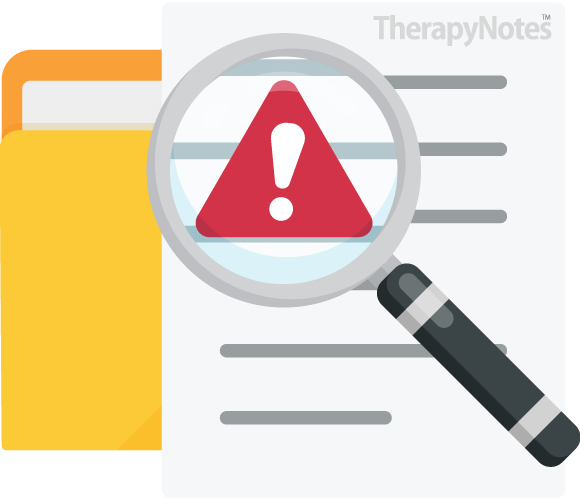5 Easy Ways to Improve Your Evaluations
By Jeremy Sharp, Ph.D. on February 5, 2020

In the world of mental health, testing is a valuable niche process. We get to dive in, gather intimate information about someone’s functioning, and deliver that information in a meaningful way. But it doesn’t stop there. For the vast majority of us, the feedback session and written report are the “bread and butter” of the evaluation process; these are the processes that really help us shine and stand out to our clients because they allow us to provide them with knowledge, insight, and most importantly, support.
Unfortunately, feedback and report writing are areas of assessment where it’s easy to “phone it in.” Over time, they become routine, and we may overlook basic but important aspects of customer service. Here are a few simple ideas that will help you keep your clients’ experience polished towards the end of an evaluation.
1. Get the Name Right
How many reports have you read that have the WRONG NAME of the client listed on it? How many reports have you WRITTEN yourself, only to realize that you’ve used the wrong client’s name? I’d like to say that there are many more of the former than the latter, but we all make mistakes sometimes. Early on, I would sometimes copy and paste information from one report to another without changing the name, then I’d go back afterward (I hoped!) and update the name before sending it out. Those days are done. Now, our report template (you do have a report template, right?) is pre-populated with the terms “FirstName” and “LastName,” so that we can do a simple search-and-replace when we start writing a new report. This efficient process allows us to insert the client’s name in these sections and instantly replace the dummy text. I know other clinicians who use a random letter combination like “TKTKTK” or “XXXXX,” too. Whatever you choose, make it easy to remember and somewhat unique so that it will stand out while you’re proofreading the report.
2. Nail the Little Details
I’ve been guilty of sending out reports with the wrong birthdate, parent name, school, and so forth. These are easy enough to fix after the fact, but getting them right the first time shows professionalism and attention to detail. Double check these components before you finalize the report. We have a demographic sheet in our intake paperwork that lists all of this information in an easy-to-find format.
3. Deliver the Report According to Your Client's Wishes
After feedback, we have to send our report to our client. You may hand the report to the client directly during your feedback session. Or, if you send it afterward, you have the option of paper mailing, electronically sharing it, or sending it through your client portal. Make sure to ask the client how they would prefer to receive the report. Some clients are all-in on electronic records, some prefer a paper copy to hold and flip through, and some want both to cover all the bases.
4. Keep Clients Updated on the Report Delivery Date
This tip is for all of us who finalize (or start!) the written report after the feedback session has already occurred. Over the years, I’ve found that clients are typically anxious to get those results in hand and read through everything in detail, and they want to know when they can expect the report. We communicate this information in a number of different ways, and it starts with the first phone call. During this call, our admin staff offer our clients a timeline of the evaluation process, including when the report will be delivered in relation to the feedback session. It is reinforced in our practice's welcome email that clients receive when they schedule their intake. Then we revisit it at the end of the feedback session, where I’ll say something like, “You can expect the report in about two weeks. If you have questions before you receive it, don’t hesitate to reach out.” If it looks like the report is going to be delayed for any reason, I will also email the client and communicate the delay to ensure that they don’t have to wonder. People have always been understanding; honesty goes a long way.
5. Send the Report to Referral Sources and Others Involved in the Client’s Care
Many clients come to us by referral of a therapist, physician, or other practitioner who is also interested in the evaluation results. We make it a point during the feedback session to ask if they’d like us to send the report directly to anyone involved in their care for convenience, and we do so in only a day or two of the report being finished. Again, this is a small but important gesture in client care.
Bonus: Include One Round of Edits
I don’t claim to get everything correct in the report the first time around. I give clients one round of “free” edits after they receive the report. Yes, we all have clients who will nitpick reports endlessly if allowed, but I’ve found that 99% of post-feedback edits can be done quickly and easily.
These are just a few simple but overlooked strategies that will take your client care to the next level. Excluding the report edits, you might spend a total of 10 minutes taking care of these points. The payoff in the long run is well worth it.
Did you know that TherapyNotes™ offers a Psychological Evaluation template? Our Psychological Evaluation template allows you to record the requesting party, purpose of evaluation, procedures, and comments for a complete account of your service. Plus, like all of our note templates, your client's name and information are pulled directly from their chart to limit the chance of data entry errors. Sign up for a TherapyNotes™ trial to check it out.
* The content of this post is intended to serve as general advice and information. It is not to be taken as legal advice and may not account for all rules and regulations in every jurisdiction. For legal advice, please contact an attorney.
About Jeremy Sharp, Ph.D.
Get more content like this, delivered right to your inbox. Subscribe to our newsletter.
More Content You'll Enjoy

How the Cures Act and OpenNotes Apply to Behavioral Healthcare

